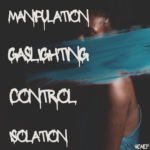Recognizing coercive control in abusive relationships is crucial for understanding when things aren’t right. Coercive control is a pattern of behavior where one person seeks to dominate another and strip away their sense of freedom. It can involve various forms of manipulation, including emotional abuse, isolation from friends and family, financial control, and threats.
These actions can be insidious and hard to spot but are damaging.
Here’s how you can identify them:
Isolation:
Your partner tries to cut you off from your support system, like friends and family, making you feel alone. making you dependent on them for support and companionship.
Monitoring:
They constantly check on you—where you are, who you’re with, what you’re doing—invading your privacy.
They might track your movements, phone calls, or online activities to maintain control and create a sense of constant surveillance.
Manipulation:
They use guilt, shame, or fear to control your actions, making you feel worthless or scared to leave and make you feel responsible for their happiness or anger.
Control over daily life:
They may dictate what you wears, eats, or whom you see, effectively stripping away your autonomy.
Gaslighting:
The abuser might deny or distort the truth, causing the victim to question their own reality and feel confused or crazy.
Financial control: They control all the money, giving you little or no access to finances making it difficult for you to leave the relationship.
Constant criticism and belittling:
Regular put-downs, name-calling, or demeaning comments are used to erode the victim’s self-esteem.
Threats and Intimidation: They use threats of harm, either to you, themselves, or others, to keep you in line.
If you recognize these signs in your relationship, the best thing to do is prioritize your safety. Here are steps you can take:
Reach Out for Help: Talk to someone you trust, like a friend, family member, or a professional counselor. You don’t have to go through this alone.
Develop a Safety Plan: Plan out how you can safely leave the situation.
Contact a Support Organization: Organizations specializing in domestic abuse can provide advice, support, and sometimes safe housing.
Legal Protection: Consider getting a restraining order if you feel it’s necessary. Legal measures can offer protection and help ensure your safety.
Trust Your Instincts: If something feels wrong, it probably is. Trust yourself and don’t downplay your feelings.
Remember, coercive control is about power and control. Breaking free starts with recognizing the problem and seeking help. Your safety and well-being are the most important things, and there are people and resources ready to support you.




0 Comments